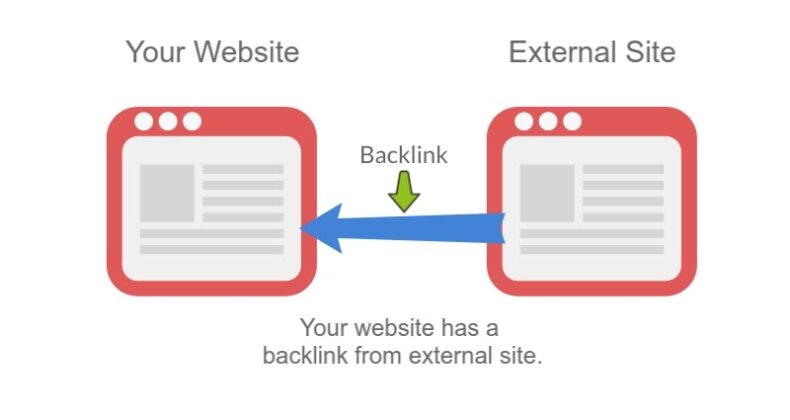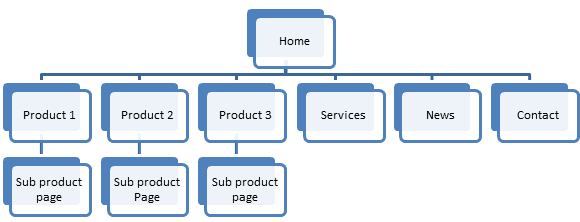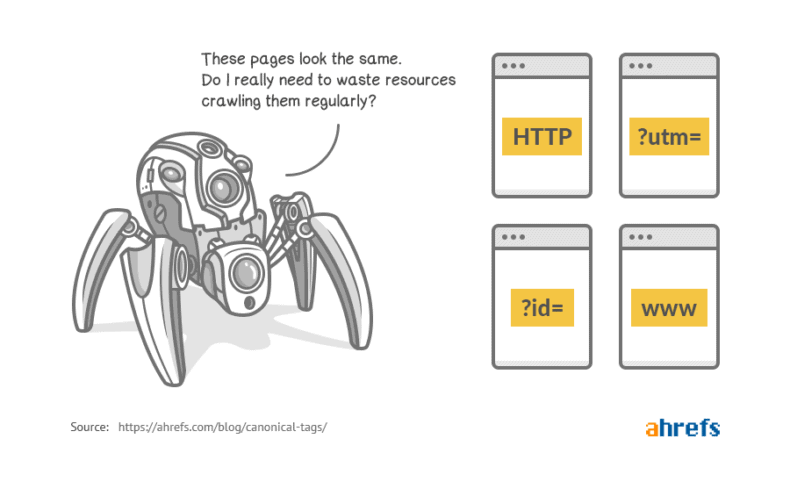Table of Contents
It often seems that the world is full of quick fixes and shortcuts to achieving lasting success in any given discipline, and search engine optimization is no different. While SEO tactics are designed to improve your site ranking, not all of them work for your benefit in the long term.
Corner-cutting practices are referred to as “black hat SEO,” and they can ultimately destroy your search engine rankings, or worse, get your site permanently banned.
Search engines publish detailed information on their ranking factors, expecting websites to adhere to their policies and follow approved SEO methods. A powerful digital marketing strategy — white hat SEO — improves your SEO performance while following these search engine guidelines so you can grow sustainably.
What is white hat SEO?
White hat SEO refers to SEO tactics that are compliant with search engine policies and guidelines. Ultimately, search engines’ guidelines are designed to ensure that SERPs are filled with valuable information.
White hat SEO involves the use of ethical methods for providing value to users. While these tactics are ultimately designed to improve websites’ ranking on SERPs, they are centered around integrity and user experience.
As always, not every webmaster is focused on building great content or using acceptable SEO tactics to achieve results.
White hat SEO vs. Black hat SEO vs. Gray hat SEO
If white hat SEO is the straight and narrow path to higher Google rankings, black hat SEO is the back alley of content optimization. Black hat SEO refers to shady or misleading SEO tactics designed to rank highly, quickly, and often without consideration for user experience.
Black hat SEO has a more short-term focus than its white hat counterpart. It typically involves taking shortcuts on important SEO practices like link building and content creation.
Some of the most common black hat SEO tactics include:
- Spamming competitors for guest posting opportunities
- Keyword stuffing that makes content illogical
- Using private blog networks (PBNs)
- Cloaking web pages to trick search engines
- Buying links instead of taking the effort to build links
- Creating several low-quality sites instead of one value-added site
Of course, white hat and black hat tactics are just ends of a spectrum. Gray hat SEO methods are somewhere in the middle, providing relevant content but bordering on compliance with search engine guidelines.
Some gray hat tactics include:
- Buying old domains
- Duplicating content from other sites
- Writing fluff content to increase word count without providing extra value
- Opening up multiple social media accounts for the same website
What are the Google penalties for using black hat SEO?
Google is constantly monitoring the quality of content that shows up in its search engine results. The bottom line: Trying to circumvent the rules by using black hat techniques will eventually catch up with you in some way.
There are two well-known Google algorithm updates that cause penalties for black hat SEO techniques:
- Panda: Demotes websites with diluted, weak, duplicate, or low-quality content
- Penguin: Penalizes websites that use black hat backlink strategies
Penalties typically involve a sharp decrease in a site’s search engine ranking. Depending on the severity of violations, Google may also ban sites (either temporarily or permanently) from the SERPs.
Expert white hat SEO tactics to grow sustainably
There are certain white hat SEO tactics that stand out as particularly valuable. Below is a roundup of some of the most tried and true WordPress SEO strategies that are considered white hat.
Invest in quality content marketing
What separates a white hat website from a black hat one is its value to users. As such, a great white hat strategy hinges on quality content marketing.
You can achieve this by doing your due diligence. Research what users want to read about and then provide excellent information on that subject. Combine this with important information for search engine crawlers, and you have a recipe for high-ranking content that serves the reader. Here are some ways to ensure your content is high-quality:
Do keyword research
It’s really hard to market a product that no one wants. That’s why keyword research is vital to impactful content marketing–it shows you what users want to read about (or watch, or listen to, etc).
There are many great keyword research tools like SEMRush or Ahrefs designed to make it simpler. During this step, don’t limit yourself to just one or two words. Think outside of the box by looking for frequently-searched questions or long-tail keywords.
Organize your content with headers
Headers make an impact by providing structure for crawlers and users. Visually breaking up your sections allows readers to find the information they’re looking for more quickly. Don’t forget to include keywords in your headers and make sure they accurately describe the content in each section.
Satisfy search intent
Since white hat SEO focuses on user experience, its number one goal is providing the right information for each search. You can improve your SERP position by providing the exact content that your keyword or phrase is asking for.
Search Google for your keyword and see what’s ranking on page one. The content you see is a big clue into what people are looking for when they type that query. For some keywords, searchers may be wanting to read a blog post. For others, a product page might make more sense.
Figure out what makes the most sense and create it. This is referred to as satisfying search intent, and it should be the focus of all written content on your webpages.
Focus on originality and thought leadership
Differentiation is something that all bloggers and webmasters should be including in their SEO strategy. Once you’ve done your keyword research, the next step should be figuring out a unique way to present your ideas.
Search top-ranking pages for your topic and see what everyone else is providing to users. From there, you can see what is lacking either in content, format, or experience.
Maybe you can differentiate by providing unique infographics on industry statistics. Or maybe you’ll provide the first full-length guide, video tutorial, or interactive webpage for your given topic. The more creative you can be, the more you set yourself apart and ensure your content’s unique value to users.
Use internal links
Internal links are a valuable tool for improving engagement metrics. They improve user experience by creating a seamless flow between topics on your website.
When you use internal links, make sure to pick relevant anchor text that accurately explains the link’s content. This helps crawlers pick up on the relevancy and value of these internal links while giving users a preview of what they can expect on the next page.
Optimize your images
Image optimization is an easy way to rank higher, as many sites don’t take advantage of this SEO opportunity. Alt text gives context to crawlers that can’t view pictures or infographics. Not only do optimized images help search engines, but they also improve your site’s accessibility to the visually impaired. Remember: be descriptive, be accurate, and use keywords.
Generate backlinks
A powerful SEO strategy includes backlinks because they build your credibility to audiences and search engines. There are many ways to generate backlinks but here are some of the most effective methods:
- Guest blogging: create great content for other brands and earn their confidence
- Make graphics that others will share on their pages
- Create brand social media accounts to improve industry presence

Submit an XML sitemap to Google
An XML sitemap is another white hat SEO tactic that is underutilized. Give search engines everything they need to navigate your website and automatically boost your credibility.
Putting in the effort to create a sitemap may also help you see inefficiencies, so it’s a good exercise regardless of the fact that it boosts your search rankings. If you’re unsure of how to do this, both Google and Bing offer XML sitemap plugins that generate one for you.
Design for mobile-friendliness
Google’s mobile-first indexing process means that mobile versions of web pages are indexed before desktop versions. This matters to you because if your mobile site is difficult to navigate, crawlers will have a hard time indexing the content. If your site is slow, it will negatively impact your bounce rate and lower your rankings.
Make sure you test your site’s mobile-friendliness. You can do this by utilizing mobile SEO strategies and tools like Google Search Console’s mobile usability feature.
Write great meta titles and meta descriptions
Meta descriptions make up the snippets that users see when they view a SERP. As such, they should be detailed, coherent, and relevant to the focus keyword. Make sure to include what you’re offering and how it helps the user, while signaling to crawlers which search terms the page should be indexed under. Here’s an example:

Carefully crafted meta tags, titles, and descriptions are the key to a great white hat SEO strategy, helping both search engines and users understand your content.
Speed up your page load time
Most people exit websites that take too long to load, and site speed is one of Google’s most well-known ranking factors. Especially since Google switched to mobile-first indexing, you need to provide an efficient interface across all devices.
Some ways to speed up your page load time include:
- Install an image optimizer plugin
- Cache and condense your coding data (Javascript, HTML, etc.)
- Compress image files or choose smaller files to begin with
- Use motion features sparingly, not on every element
There are many excellent plugins that SEO pros use to improve their site speed.
Create an intuitive site hierarchy
When users come to your website, you want them to be able to find what they’re looking for in the simplest way possible. They should be able to click from page to page with ease. An intuitive site hierarchy will achieve this by keeping levels of information organized, and categories to a minimum. To do this, it’s important to plan what your major topics and subtopics will be in advance.

Planning will give your content focus that ultimately translates to how it’s read. A good site hierarchy improves user experience and lowers bounce rates while making it easier for search engine crawlers to index your content.
Don’t forget technical SEO fixes
Technical SEO is arguably the most overlooked SEO pillar. It is the optimization of all the behind-the-scenes elements of a webpage that affect its performance.
Create a robots.txt file
Unless directed otherwise, crawlers will search every page you have on your website. Crawling these pages takes resources and that’s why it’s important to direct crawlers’ focus to only the most useful and relevant information.
Creating a robots.txt file allows you to tell crawlers how to crawl and index certain pages of your site. Not only will this speed up the crawling time, but it will also spare you ranking deductions for duplicate content, spam, or any other irrelevant pages.
Use schema
Many websites fail to include schema markup which are tags that enhance your HTML coding data to make it more detailed for search engines.
With schema, you can create clearer definitions for terms in your content that help generates rich snippets.
Rich snippets play a strong role in making your page stand out on SERPs and can improve your click-through rate, as well.
Use the canonical tag for duplicate content
If you have multiple pages with the same or similar content, a canonical tag tells the search engine which page to display on the SERP. Otherwise, with different URLs, only one of the pages will be chosen by Googlebot to crawl and index.

Make sure that you use these for any duplicate content, as crawlers may get confused as they search your website and not know how to properly index your pages.
Invest in SEO tools
Some marketing tactics don’t require many tools to do well. SEO isn’t one of those tactics. Tools that help you communicate with Google, like Google Search Console, and ones that enable keyword research, like Ahrefs, are just two types that everyone serious about SEO should consider. Luckily, for every paid tool there are usually free alternatives. Here are a few of the most popular SEO tools, both paid and unpaid:
- SEMRush
- Ahrefs
- Google Search Console
- Yoast SEO
- Moz
Investing in these tools is a smart way to get ahead in your SEO. They will clarify SEO concepts, simplify SEO practices, and standardize your site’s SEO approach moving forward.
Should you always use white hat SEO techniques?
Depending on the industry you’re targeting, there could be a loose argument in favor of black hat SEO techniques. In a blog post for Ahrefs, Tim Soulo puts it well:
“But if you’re in a spammy niche like “payday loans,” white-hat probably isn’t going to cut it.
Black/grey-hat SEO dominates some niches (e.g., “payday loans”). And while we’re advocates of a white-hat approach, the truth is that there’s little/no chance of winning when playing “by the rules” in such industries.
Sure; you can start out with the best of intentions (i.e., white-hat) in these kinds of niches. But as soon as you start seeing success, competitors will likely drag you back into black-hat SEO territory.
But if you’re running a legit project in a legit industry, you have an excellent chance of winning without using risky black-hat tactics.”
The bottom line is this: White hat techniques are for businesses that want to make a valuable contribution to SERPs and are interested in longevity. Black hat techniques are risky and solely focused on quick, often unsustainable growth. If you want to avoid Google penalties and are focused on long-term, continuous growth, white hat SEO techniques are the way to go.
Get a complimentary WordPress SEO audit
Trying to gain website traffic by circumventing approved SEO guidelines is a slippery slope that can get your site banned. If you value user experience over quick growth, you’re more than likely already using white hat tactics to improve your rankings. After all, white hat SEO strategies are reliable, effective, and safe for improving your rankings while providing value.
Want to find out how you’re doing in all areas of SEO? Get an instant SEO audit below. Or, schedule a free consultation to see how intent SEO can boost search traffic revenue by 700%.
